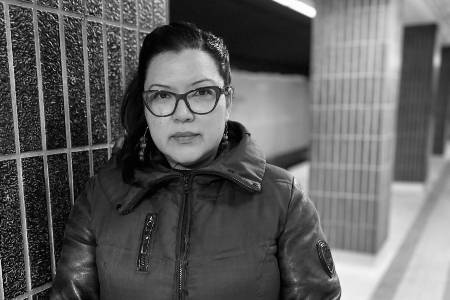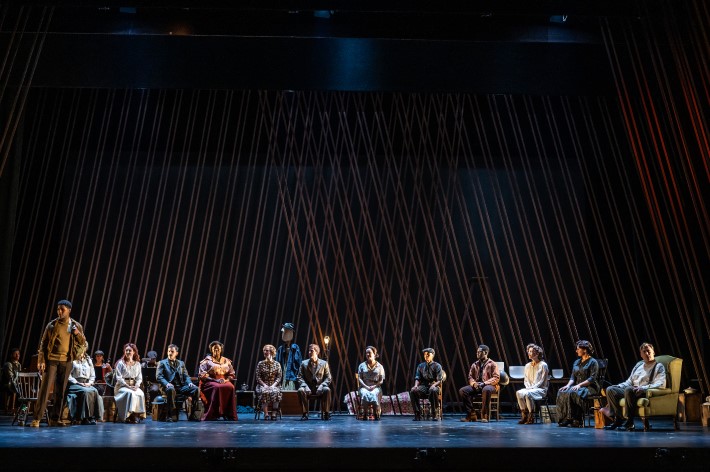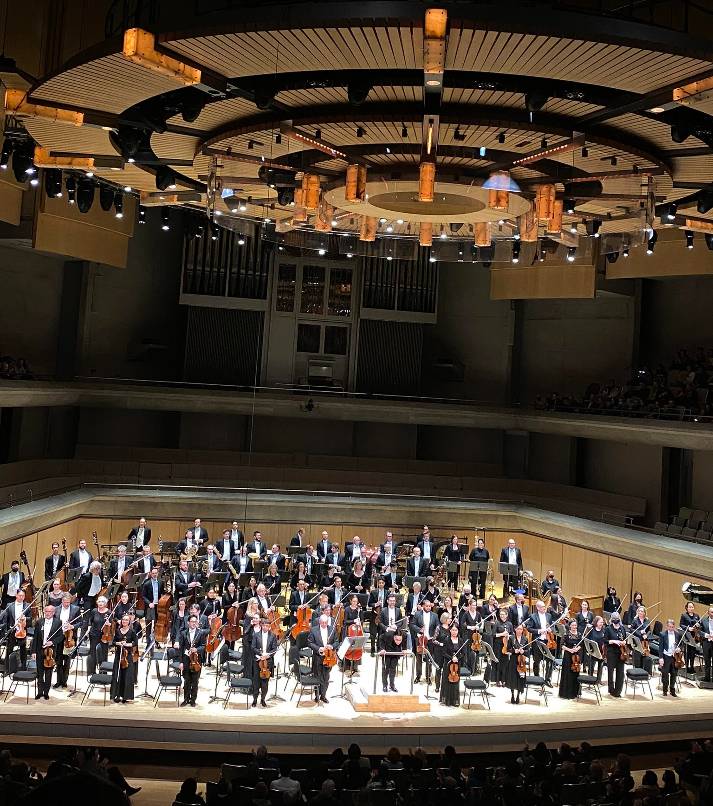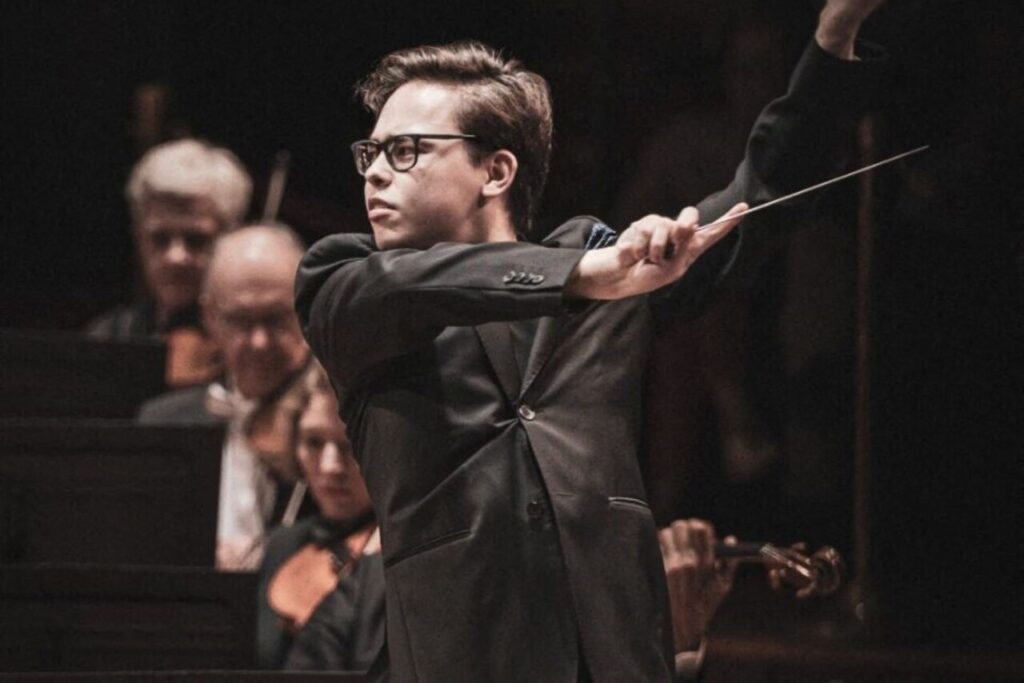As part of my birthday month celebration, I always make it a point of enjoying as much of the Toronto arts & culture scene as possible. This year was no exception and I compiled an In The City list that I hope some of you were able to use to plan your days out and about.
Here are some details and recap of my time at a couple of events in the past month.
Fall on Your Knees
Based on the Novel by Ann Marie MacDonald
Co-created and Written by Hannah Moscovitch
Co-created and Directed by Alisa Palmer
Family saga. Two parts. Six hours. Broken lives. Broken hearts.
Fall On Your Knees, Ann-Marie MacDonald’s popular 1996 novel focuses on the Piper family; set in Cape Breton in the early part of the 20th century. This stage version also focuses on the Piper family. In the play, we se many parts of the story from different characters’ point of view.
The first part of the play introduces James Piper (Tim Campbell) from a Celtic family. He falls in love with the underage Materia Mahmoud (Cara Rebecca), the eldest daughter of a Lebanese Canadian family. They elope which makes Materia incommunicado from her family.
Their married life has its ups and down but eventually Kathleen (Samantha Hill) is born. The eldest is the apple of her dad’s eye. In James’ eye, Kathleen is a born singer who will make it big one day. The relationship between James and Kathleen worries Materia which puts a wedge between mother and daughter, as well as, between husband and wife. Nonetheless, the family grows and two more daughters are born – Frances (Deborah Hay) and Mercedes (Jenny L. Wright).
As Kathleen grows up, James decides to send her off to New York in part for her career but also to get her away from him. There are insinuations that James’ love for his daughter is turning into something more inappropriate. Materia has noticed this too and is happy her eldest goes away. Time passes and James forces Kathleen to return home, pregnant. Lily (Eva Foote) is born but tragedy strikes and more trauma is thrown into the household. Soon after, James leaves to fight in the First World War.
In the Toronto show, the first part ran for three hours with one intermission. The focus was primarily on the Pipers’ family development with the introduction of some supporting characters like the Jewish neighbour and a Black family. Although the performances, staging and music in this part were excellent, it felt it dragged in parts. There were parts in which my friend and I were unsure how old the younger daughters, even Kathleen, were. It made us a bit confused but it did not take away from appreciating their respective characters – of course, shout out to Deborah Hay who is always great to see onstage.
I should mention here that neither my friend nor I had read MacDonald’s book. However, this in no way interfered with our understanding of the story as it unfolded onstage. We returned the following night for the second part of this saga. We came prepared for another 3-hour show, and indeed it was three hours. Nonetheless, this time the show had two intermissions. Sections of the second part focus on Mercedes who has become a very religious young woman, while Frances has become a bit of a ‘bad girl’ which tests her father’s patience daily.
This part also takes us back to New York City and we learn more about Kathleen’s training, her friendship and her taboo relationship with her accompanist Rose (Amaka Umeh). We finally understand so much more about Kathleen and her forceful return to Cape Breton. We also learn more about other supporting characters like Materia’s family, the Mahmouds (Antoine Yared and Maryem Tollar), a Black couple named Leo ‘Ginger’ and Adelaide Taylor (Tony Ofori and Janelle Cooper) and a Jewish family called the Luvovitzs (Diane Flacks and Drew Moore).
The second part moved much more effortlessly. My friend and I really enjoyed Amaka Umeh’s performance. Her change from accompanist to Kathleen’s love interest is truly fantastic. As well, the music in both parts complemented the story so well. I understand music is also quite important in the book. The minor critique here is that we could not see the musicians too well since they were sitting and playing at the back of the stage. Speaking of the stage, the set design by Camellia Koo made great use of the space and added layers in visual ways that really stood out for me. For example, the chairs floating above stage and what appeared to be slats that create a frame. Leigh Ann Vardy’s lighting also added a great element of mood and atmosphere to the show to make it even more compelling. The show all comes together under direction by Alisa Palmer to make it an epic theatrical journey to be sure.
I also want to mention the inclusion of some of the multicultural aspects in the show. I wonder if the stories of the other families were intertwined a bit more in the book, and if they are much more abbreviated in the play. If so, I can understand why given the length at 6 hours total. It is also important to point out the show deals with topics like racism, gender identity, sexuality, as well as dark topics like domestic violence and sexual abuse. I wish the program contained more transparent content/trigger warnings or at least a mention of these prior to the start of the show. I am curious how other venues across Canada will stage the show… Guessing it will be similar, yet a new theatre will give it new energy.
Fall on Your Knees is not an easy show to sit through but do not let that deter you from attending. There is much to appreciate in this adaptation of the much beloved novel. It is a new way to experience the story and meet its characters.
Toronto Symphony Orchestra
Shostakovich 5 + Crow Plays Brahms
Tarmo Peltokoski, conductor
Jonathan Crow, violin
The first part started with Kaija Saariaho’s Ciel d’hiver (Winter Sky). This composition is an arrangement she made of the second movement of her orchestral piece Orion, originally written for The Cleveland Orchestra in 2002. From the program book, I understood the piece uses a blend of timbres and the effects of a large orchestra with which Saariaho creates a soundscape that evokes the vastness and harshness of a winter sky.
Saariaho is a prominent member of a group of Finnish composers and performers who are now, in mid-career, making a worldwide impact. This was my first time experiencing any composition by Saariaho. My guest and I truly enjoyed Ciel d’hiver. Its use of various instruments including strings, brass, and piano really gives it weight… building up in sound to bring forth a sensorial experience of what winter feels and sounds like.
Next was Johannes Brahms’ Violin Concerto in D Major, Op. 77 in three movements. In reading the program notes, I learned this concerto was composed for Brahms’ friend Joseph Joachim, at the time, the most important violinist in Germany. The piece is also conservative in its form with Brahms using Beethoven’s work as his model, but also indebted to Mozart, Schumann, even the Baroque concerto.
The dialogue between the orchestra and violin solo, played effortlessly by Jonathan Crow, is quite lovely to hear live. The cadenza in this piece, which is an extended passage for the soloist alone, was composed by Joachim, at the Brahms’ request. Though others have written cadenzas for this concerto as well, Joachim’s remains the standard.
It is evident the solo parts are very difficult to play, but the orchestra also plays a prominent role in this concerto. From some of my research on this piece, the role of the orchestra seems to be more involved than was typical at the time, and some think this is what gives the work a “symphonic” quality. Truly a lovely piece to experience live.
The second part featured Dmitri Shostakovich’s Symphony No. 5 in D Minor, Op. 47 in four movements. I will mention here that Shostakovich is one of my favourite composers and I listen to his various compositions regularly.
From my reading about this symphony, I learned that just a year before it premiered (1936), Shostakovich’s “racy and subversive opera, Lady Macbeth of the Mtsensk District was attack as “muddle instead of music” in an editorial, in the Communist Party newspaper, Pravda.” Stalin was in power then, and one can only imagine him living in fear for his life and his art. It was known that Stalin would denounce his fellow citizens as enemies of the state especially around anything that would come across as subversive.
In a haste, Shostakovich wrote his Fifth Symphony in four months from April to July of 1937. It was first performed, in Leningrad, on November 21, 1937. It was so well received that the press called it a triumph of “socialist realism.” In the eyes of Stalin and others in power, Shostakovich was back in their good graces, so to speak.
When listening to the Fifth Symphony, one experiences an array of emotions. The first movement starts off with strings then moves onto include brass, drum beats and woodwinds. The feelings here go from light to dark within minutes. In the second movement, we encounter sounds similar to what we hear in film scores… often being described as “a spoof of waltzes”.
The third movement is sometimes compared to a “requiem without words” – here we hear an oboe accompanied by some strings and some brass. Then almost out of nowhere, the rest of the orchestra comes in. In the last movement, Shostakovich finds a way to bring together what appears to be a ‘happy ending’. The fourth movement starts off march-like then builds up in pace and orchestration only to ‘come down’ again towards its climax. Paraphrasing a friend, “there is a lot happening here.”
Remember, Shostakovich felt his career and life were at stake at this time and as such, he needed this symphony to please the audience. In the end, Stalin was pleased with the Fifth Symphony and Shostakovich was in good standing. There is much debate about whether Shostakovich meant this piece as a criticism or a mockery even, of Stalin’s brutal regime… no one can confirm either with certainty.
To this day, this is one of his most popular works and I can certainly see why. I, for one, love the back and forth in terms of orchestration and emotion in this symphony. I do not mind when a symphony starts in one tone then moves on to something completely different… Start with strings and end with a full orchestra? Yes, please! The friend who attended the concert with me was less enthused about the Fifth Symphony… and this is totally fine.
Music is such a personal experience. My friend and I spoke about the concert as a whole, and both agreed the first part of the night was quite lovely. The only part where we differed was in the Fifth Symphony; nonetheless, we always agree that attending a TSO concert is always a good time. It provides us time to have a mindful moment to enjoy each piece on our own, but also in a communal space where we can take it all in with a bigger group.
Before I close, I also want to mention the conductor for the night was Finnish conducting prodigy Tarmo Peltokoski. We really enjoyed the energy and enthusiasm with which Peltokoski conducted the entire evening. My favourite part was seeing him truly enjoying Shostakovich’s Fifth Symphony. Peltokoski really was able to bring out the essence of this masterpiece in his Canadian debut. I am looking forward to seeing where his career takes Peltokoski next.
Part of birthday celebration must also include some great cinema, like Hlynur Pálmason‘s Godland… highly recommend it. As well, I took in the beautiful work by Alvin Ailey® American Dance Theater. Of course I am still not finished with my celebrations, there is still plenty to enjoy In The City.










